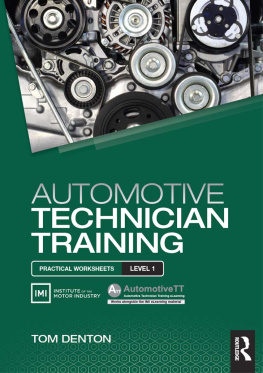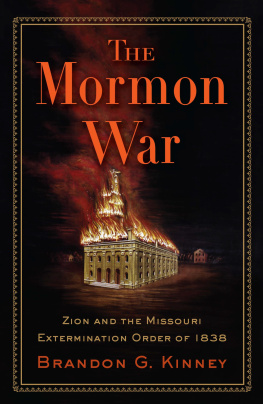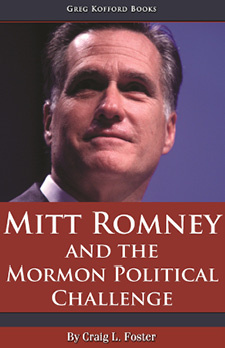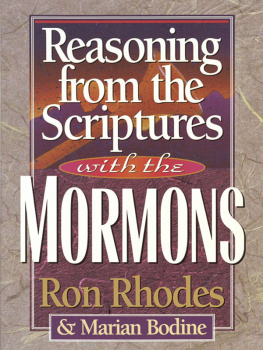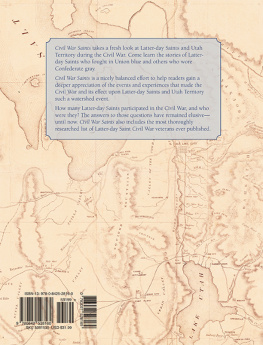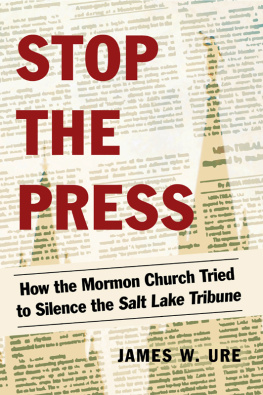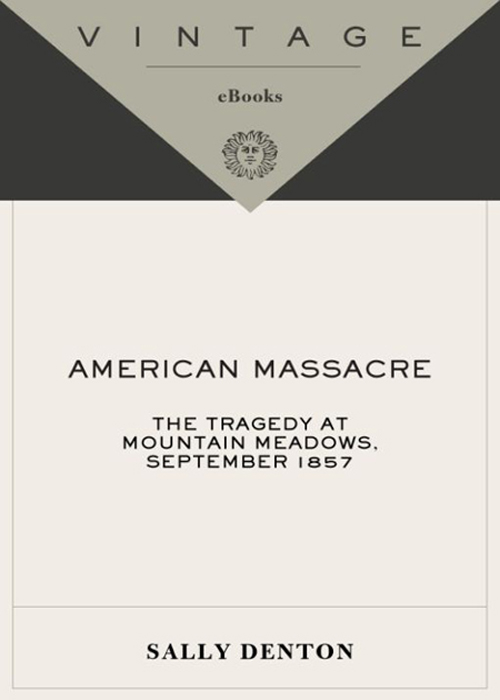
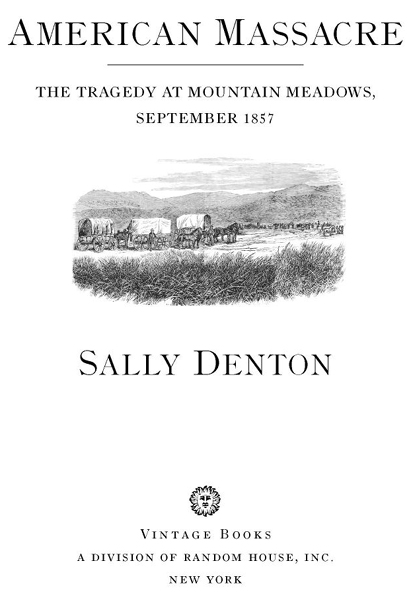
Table of Contents
For my sons,
Ralph, Grant, and Carson
In pursuing the bloody threat which runs through thispicture of sad realities, the question of how this crime,that for hellish atrocity has no parallel in our history,can be adequately punished often comes up and seeks invain for an answer.
Brevet Major James H. Carleton, Special Report to Congress, May 25, 1859
Live in tune with the Holy Spirit.Seek the truth always. Be notafraid to learn the truth of anything,for no truth will be revealed to you as suchthat will be in conflict with Gods kingdom.
Mormon patriarchal blessing
Acclaim for Sally Dentons AMERICAN MASSACRE
Its a story told almost as often as the Donner Partys but never better than when Sally Denton tells it. Harpers
One of Americas most respected journalists, Sally Denton... painstakingly conjures the cult of personality that founder Joseph Smith developed after he published The Book of Mormon and began attracting followers. The Plain Dealer
Harrowing in its detail, American Massacre is a brilliantly researched and elegantly written work. Douglas Brinkley
Riveting.... Persuasive.... Carefully documented. ChicagoSun-Times
Denton has written a fascinating and thorough account of the tumultuous event and its aftermath. This is a superb piece of scholarship that reads like a novel. BookPage
From its first harrowing pages to the potentially explosive discovery described in the epilogue, American Massacre is hard to put down, a vivid account of persecution and paranoia, deceit and self-deception, cruelty and cover-up. Geoffrey C. Ward
A superbly crafted, blood-soaked tale of the largest civilian atrocity to occur on American soil until the Oklahoma City bombing in 1995. KirkusReviews (starred)
Sally Dentons heavily documented account of what happened at Mountain Meadows is presented without biasthe signature of a true historian. This monstrous incident may never be more sharply illuminated. Evan S. Connell
Crisp and compelling.... Highly recommended. LibraryJournal Like the best works of American literature, American Massacre seems to spring from a sense of outrage at gross evil and negligence. LasVegas City Life
AmericanMassacre brilliantly captures a forgotten episode in our countrys history. It is a fascinating story. Howard Zinn
Dentons extensively researched account of this atrocity is both convincing and chilling. Booklist
With eloquence and grace, Denton tells the story of a remarkable episode of bloodshed that remains highly controversial. Her book illuminates the disturbing meeting ground between religion and violence in American history. T. J. Stiles
Authors Note
In the following pages, all recorded acts, all thoughts or feelings, all states of mind public or private, all conditions of weather and terrain, and any other circumstance, however detailed, are based on documentary evidenceespecially the often literarily elegant and graphically descriptive journals and diaries kept so faithfully in that age. In telling a story so violent and bloody, so controversial, and in many ways so alien to modern sensibility, I have taken no liberties with the factual record. Sources for the narrative and all quoted remarks appear in the notes.
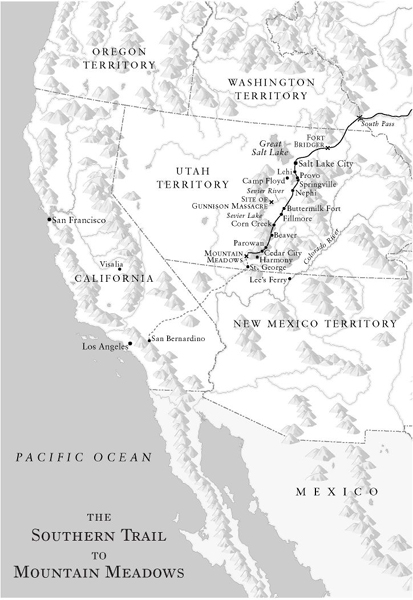
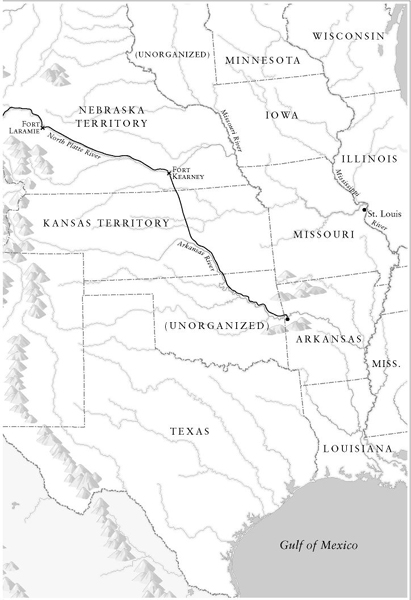
PROLOGUE
Jacob Hamblins Ranch, September 11, 1857
It is a late summer afternoon and the valley is at its most beautiful. Just weeks away from the first snows, bitter storms that close suddenly over the rim of the Pine Valley range, the days now are soft and mild, alabaster clouds stark against a sapphire sky. On the nearby ridges, native Paiute families are moving unseen on the shadowed slopes facing the valley to harvest the pion trees already bulging with cones. The quaking aspen on distant peaks are beginning to turn golden.
Emigrants along this wagon train trail to California describe their surprise and joy coming upon the pasture. At a six-thousand-foot divide between rivers emptying into the Great Basin and the watershed of the Colorado, the floor of the valley is not large, a few hundred yards wide and less than five miles long north to south. But the lush high-country grasses fed by three strong and clear springs create a precious oasis between the craggy plateaus behind and the great desert ahead to the west. Even seasoned travelers are impressed. The best grazing tract in Utah Territory, a respected U.S. Army explorer, Brevet Major James H. Carleton, will say of it when he and his company of dragoons ride onto the site twenty months later. For almost everyone who comes here, Mountain Meadows is a haven, a refuge, a place of life and renewal.
Hard against the foothills of the northern slope, Jacob Hamblins summer home is still unfinished from building begun months earlier. The Church of Jesus Christ of Latter-day Saints, which Hamblin serves as a devout member and obedient agent, has granted him ten square miles of land here, encompassing the whole of Mountain Meadows, and his new stone and adobe ranch house has a commanding view of the valley. Today, standing expectantly in front of the house, his wife, Rachel, and their hired hands have been listening to some commotion from the fields beyond. Now they can see rocking open wagons straining up toward them on the rutted track from the pasture.
Hundreds of cattle bray in alarm as they are herded north toward Cedar City. Two hundred horses, most of them valuable Kentucky thoroughbreds, rear and shriek at strange hands and the smoke of blazing pyres nearby. Forty prairie schooners and four ornate carriages rumble and creak under new drivers, coming back up out of the valley on the same trail by which they entered it days before. Buzzards caw impatiently as they circle above, and wolves have already begun to gather and howl at the edge of the valley, waiting for the living to clear out. The enclosing ravines and ridges magnify the din. But as two regimental baggage wagons draw nearer the Hamblin ranch, the screaming and moaning of the more than twenty children they carry drown out every other sound. The children, who range in age from nine months to seven years, are all under the age of eight, young enough to be considered innocent blood in the Mormon faith. They have had no fresh water and little to eat for five days. The blood of their parents, sisters, and brothers still wet on their skin and clothes, they are hysterical from what they have just seen. Two of them are severely wounded and one will soon die.
One of the men walking behind their procession up to the Hamblin house, a sun-leathered figure named John Doyle Lee who has commanded and joined in the mass murder that has just taken place, will soon decide how this cargo of terrified children will be distributed along with the other loot, brothers and sisters to be separated as chattel among households in the region. Lee seems untroubled by what has happened. That evening, exhausted by his work in the days carnage, he stretches out on a grassy mound beside the ranch house and, using his saddle as a pillow, sleeps easily until the next morning.
Next page


